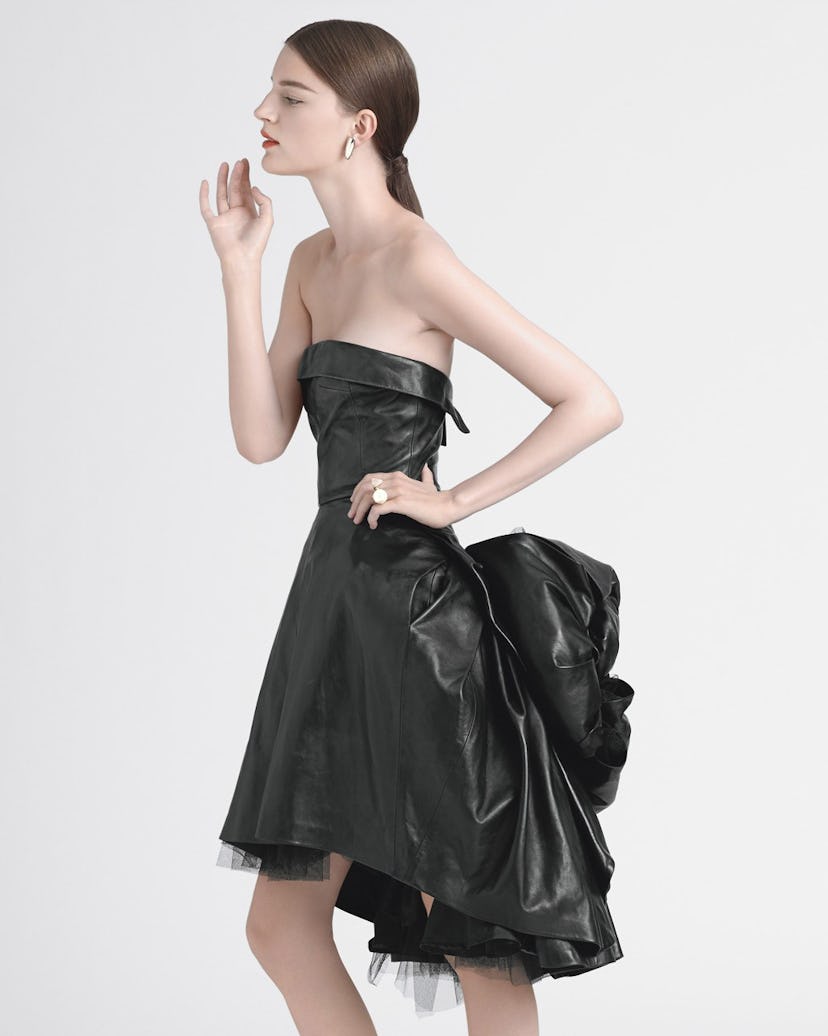This Old Thing?

“The future has arrived,” the essayist and novelist Kurt Andersen once wrote. “And it’s all about dreaming of the past.” Certainly, that was true at the fall shows. From the checks and bowling bags at Prada to the bolero jackets and cowl-back dresses at Balenciaga to the sheer skirts and sweatshirts at Givenchy, ideas from decades-old collections showed up on the runways and—despite their provenance—felt entirely au courant.
This mining of fashion history was particularly central to Raf Simons’s second ready-to-wear collection for Dior. Interested in exploring the things he and Monsieur Dior had in common, including a passion for art, Simons embroidered early Warhol fashion illustrations onto dresses and embossed them onto clutches. And to further highlight the dialogue between himself and his label’s namesake, he included four looks from the archive, reimagined. “I wanted to revisit some of the most representative designs and present them as symbolic of what we are working on now,” Simons said.
Dior’s rose silk Opéra Bouffe dress from 1956.
To that end, he swapped pastel silk flowers on an embroidered 1949 Miss Dior dress for black leather rosettes; reworked both a navy wool 1947 Doris coat and a rose silk 1956 Opéra Bouffe dress in double-face black leather, and reissued a 1948 scarf-tied Arizona coat in scarlet wool. What makes the pieces so appealing is, perversely, that they are not radically new. It’s hard to be accused of blindly chasing trends when you’re wearing something so deeply rooted in the past. And besides, it doesn’t take a student of fashion history to understand the allure of a coquettishly punk cocktail number, nipped in at the waist in the most feminine, flattering way.
Fashion’s tendency to sample and recycle is certainly nothing new. Despite its name, even Monsieur Dior’s famous hourglass New Look silhouette, hailed as a watershed moment for post–WW II fashion, wasn’t altogether original: It referenced the corsets and petticoats of the designer’s Belle Epoque childhood. But what made his fanciful design strike a chord was its contrast with the protracted frugality of the war years. “It happened that my own inclinations coincided with the spirit or sensibility of the times,” he wrote in his 1956 autobiography, Christian Dior and I.
Christian Dior’s red wool Arizona coat from 1948 (left) and as interpreted by Raf Simons.
For Simons, too, the zeitgeist takes precedence. So, when it comes to reinterpreting sartorial history, there’s no place for kid gloves. “It’s important to think of fashion as part of life,” he said. “The past can inform, but nostalgia should not be a part of it.”
Photo: Tina Tyrell. Hair by Kayla Michele for Perfect Locks Hair at Atelier Management; makeup by Stevie Huynh at D + V Management; Model: Laura Kampman at New York Models; Styling Assistant: Michelle Morgan; Special Thanks to Dune Studios.